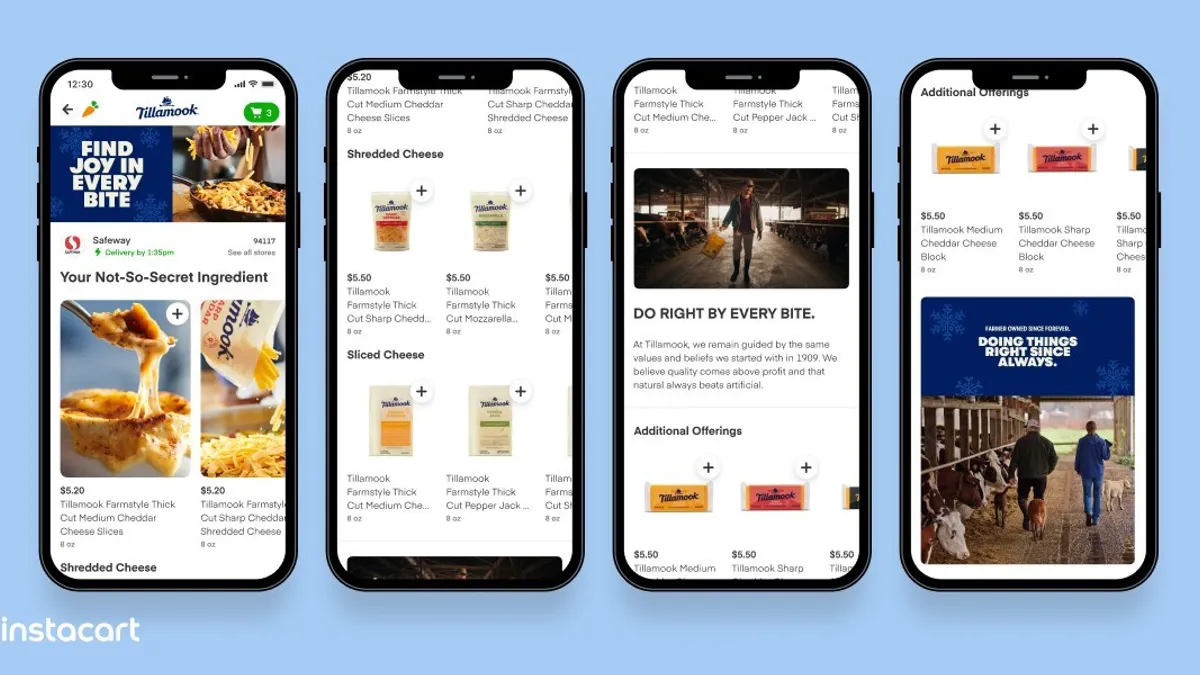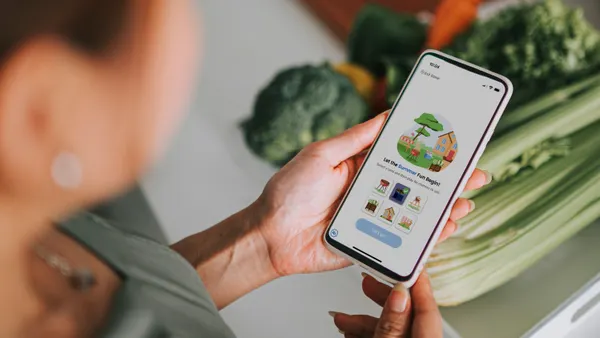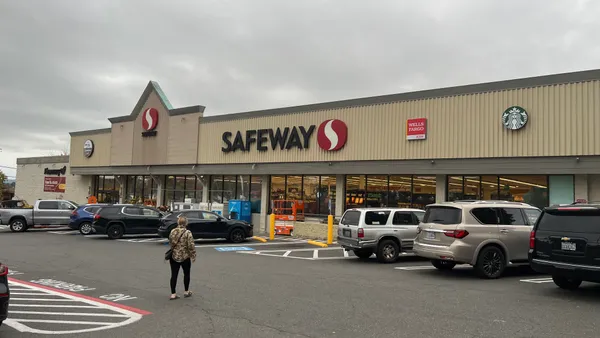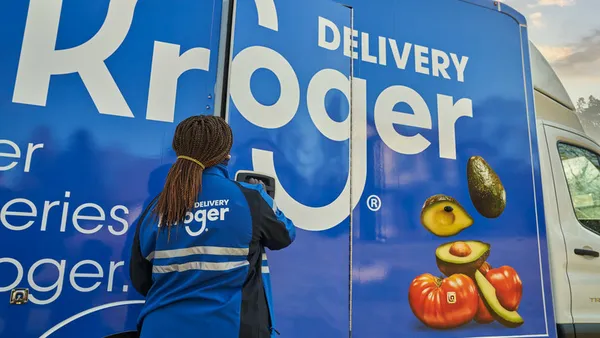Dive Brief:
- Instacart unveiled on Wednesday new advertising capabilities for brands, including CPG brand pages that function as digital storefronts where shoppers can buy products from their most recently shopped retailer.
- The company said the new products, which also include a suite of display ads, let brands run “a full-funnel marketing strategy throughout the entire consumer shopping journey on Instacart.”
- The announcement furthers Instacart’s advertising push by offering more products that allow brands to connect with shoppers across the marketing funnel.
Dive Insight:
The announcement is the latest move by Instacart to level up its ads business, which the company has said is poised to be one of its fastest-growing units in the near future.
Joining Instacart's current advertising tools, which include its sponsored product offering and self-service and managed ad services, the new options offer brands more opportunities to reach shoppers who use different purchasing paths, according to the company. The display products are available now, while the brand pages are being piloted by a few CPGs before becoming available to all of the more than 4,000 brands Instacart works with.
Shoppers will be able to purchase items from CPGs’ brand pages, which will show which items are in-stock from the retailer each customer most recently shopped. The brand pages provide flexibility with what brands can highlight through imagery, text and product collections. Advertisers can use unique URLs to funnel in traffic from Instacart displays and also from off-platform marketing campaigns.
To complement the brand pages, Instacart added display ads products, which are auction-based banner ads, for brands to have more opportunities to interface with customers as they search and shop. For example, display ads can reach new shoppers by using customized targeting based on anonymized purchase behavior or specific keywords.
"We know the way consumers shop on Instacart varies. Some people head straight for a specific aisle to browse, and some start with the 'Buy It Again' carousel displayed on the storefront to get their favorite 'go to' items, while others have a list of items already in mind or might use the search function to find inspiration," Ryan Mayward, vice president of ad sales at Instacart, said in the announcement, noting the products build on efforts to offer advertising solutions to “brands of all sizes.”
Instacart said Ben & Jerry's, Breyers, Kidfresh and Klondike are among the first brands to use the new offerings.
Newly available features in the Instacart Ads self-service portal, Ads Manager, include daily budgeting capabilities, new product content control and on-demand business data, according to the announcement. In its quest to become one of the largest online grocery advertising platforms globally, Instacart has rolled out numerous tools to its advertising toolbox in recent months.
Last June, Instacart announced a $1 million advertising initiative to boost Black-owned brands and plans to add resources for brands to maximize their ad campaigns. Last year, Instacart launched its first brand campaign, which included QR codes to a shoppable recipe on its app, and began rolling out digital storefronts for companies like Butcherbox and Sun Basket.
The company has also made several top hires connected to its advertising business, including Mayward, who started in March after working at Amazon for nine years, and Carolyn Everson, who left just a few months after becoming the company's president in September — dealing a significant blow to the company's image at the time.
Several industry observers have pointed to Instacart's growing ads business as an area the company can further develop into a differentiated, and lucrative, venture. Grocers are also ramping up their digital marketing capabilities and trying to drum up ad sales from CPGs, setting up an indirect clash with Instacart as they compete for promotional dollars.












